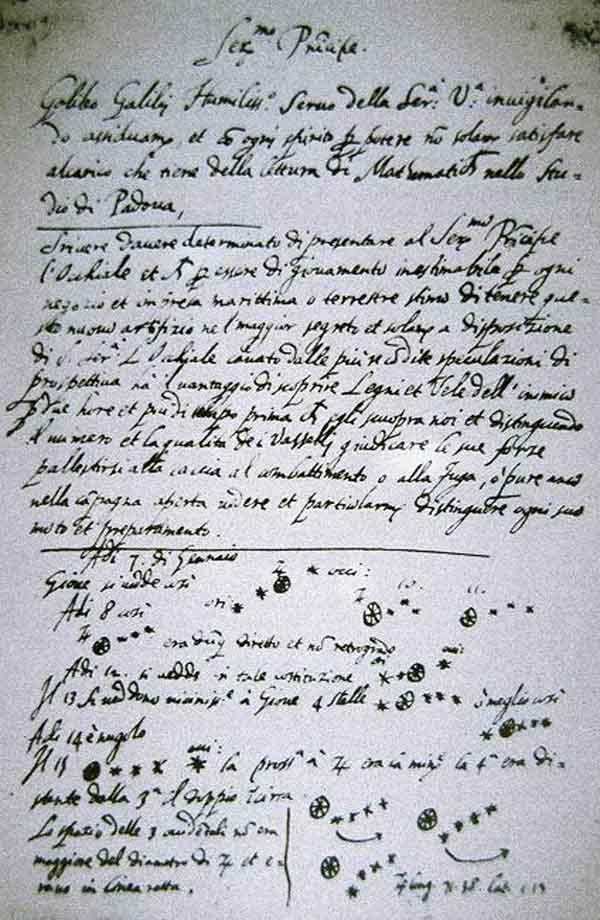Image:Galileo.script.arp.600pix.jpg
|
|
Template:NowCommons Galileo Galilei’s discovery of the moons of Jupiter. This is a page from Galileo's published discovery of the moons, which appeared in Sidereus Nuncius in March 1610.
Probably the most significent contribution that Galileo Galilei made to science was the discovery of the four satellites around Jupiter that are now named in his honor. Galileo first observed the moons of Jupiter on January 7, 1610 through a homemade telescope. He originally thought he saw three stars near Jupiter, strung out in a line through the planet. The next evening, these stars seemed to have moved the wrong way, which caught his attention. Galileo continued to observe the stars and Jupiter for the next week. On January 11, a fourth star (which would later turn out to be Ganymede) appeared. After a week, Galileo had observed that the four stars never left the vicinity of Jupiter and appeared to be carried along with the planet, and that they changed their position with respect to each other and Jupiter. Finally, Galileo determined that what he was observing were not stars, but planetary bodies that were in orbit around Jupiter. This discovery provided evidence in support of the Copernican system and showed that everything did not revolve around the Earth.
TRANSLATION: "I should disclose and publish to the world the occasion of discovering and observing four Planets, never seen from the beginning of the world up to our own times, their positions, and the observations made during the last two months about their movements and their changes of magnitude; and I summon all astronomers to apply themselves to examine and determine their periodic times, which it has not been permitted me to achieve up to this day.
"On the 7th day of January in the present year, 1610, in the first hour of the following night, when I was viewing the constellations of the heavons through a telescope, the planet Jupiter presented itself to my view, and as I had prepared for myself a very excellent instrument, I noticed a circumstance which I had never been able to notice before, namely that three little stars, small but very bright, were near the planet; and although I believed them to belong to a number of the fixed stars, yet they made me somewhat wonder, because they seemed to be arranged exactly in a straight line, parallel to the ecliptic, and to be brighter than the rest of the stars, equal to them in magnitude . . .When on January 8th, led by some fatality, I turned again to look at the same part of the heavens, I found a very different state of things, for there were three little stars all west of Jupiter, and nearer together than on the previous night."
"I therefore concluded, and decided unhesitatingly, that there are three stars in the heavens moving about Jupiter, as Venus and Mercury around the Sun; which was at length established as clear as daylight by numerous other subsequent observations. These observations also established that there are not only three, but four, erratic sidereal bodies performing their revolutions around Jupiter."
CREDIT: NASA/JPL
SOURCE: http://www.solarviews.com/eng/galdisc.htm
COPYRIGHT: “NASA images generally are not copyrighted. You may use NASA imagery, video and audio material for educational or informational purposes, including photo collections, textbooks, public exhibits and Internet Web pages.”
PREPARED BY Adrian Pingstone in December 2003.

| This work is in the public domain because it is a work of the United States Federal Government. This applies worldwide. See Copyright.
|
File links
The following pages link to this file:

